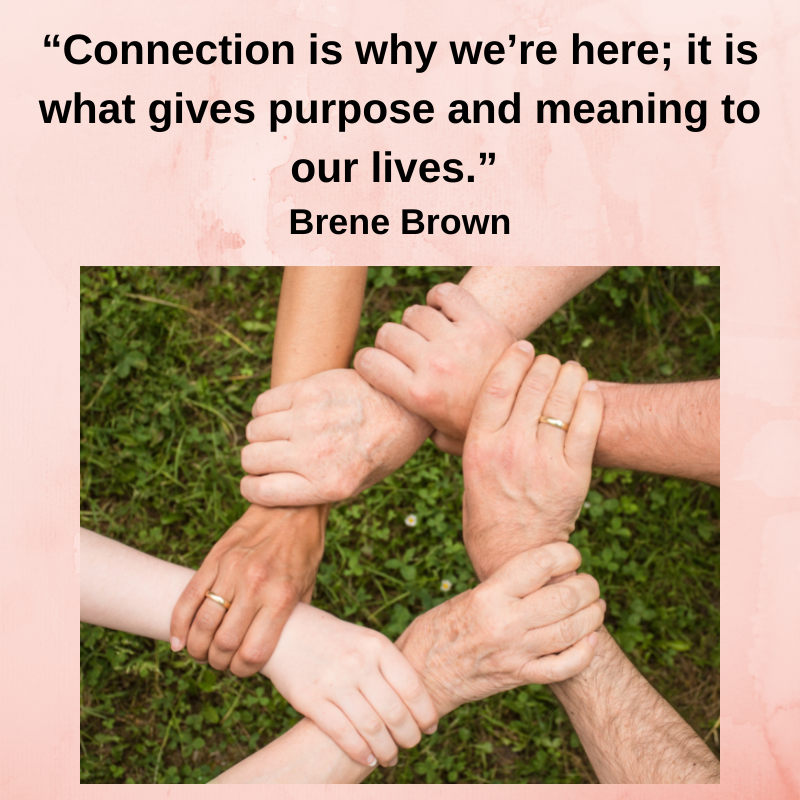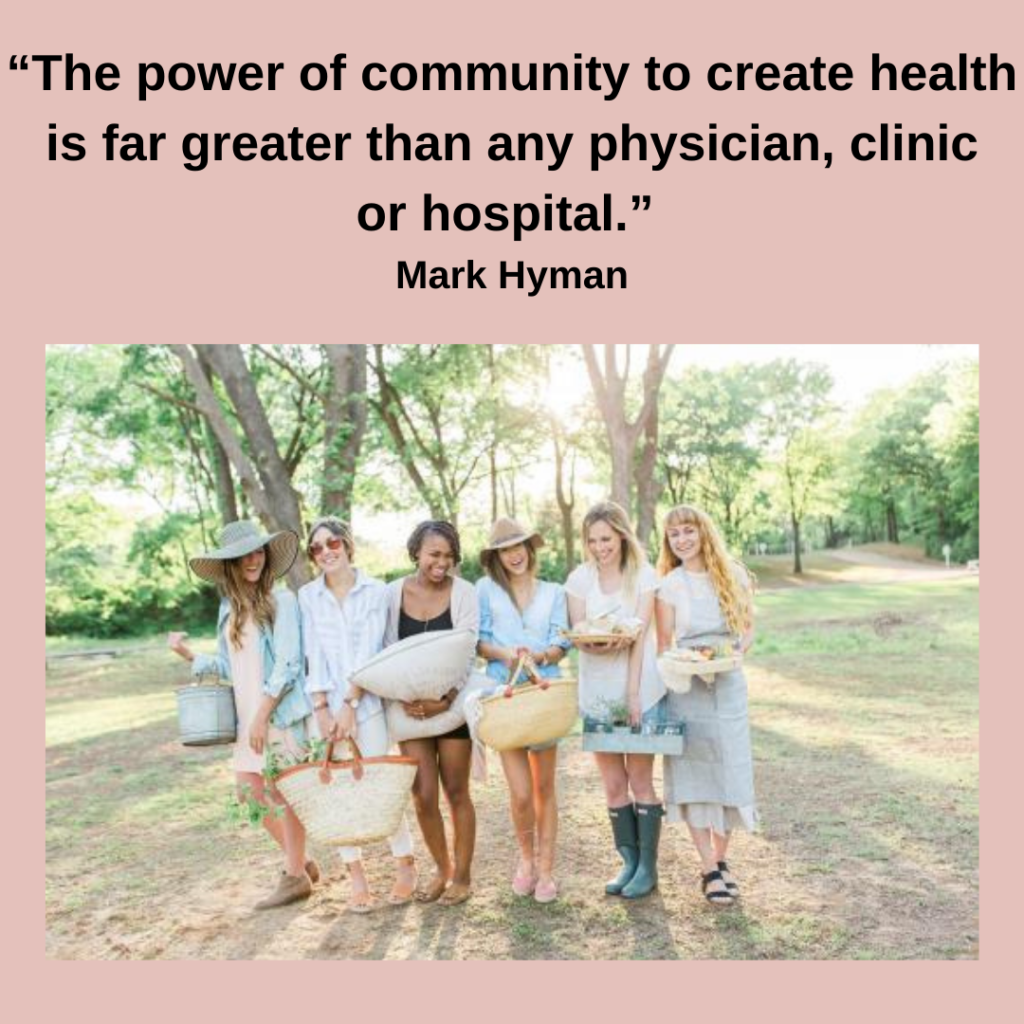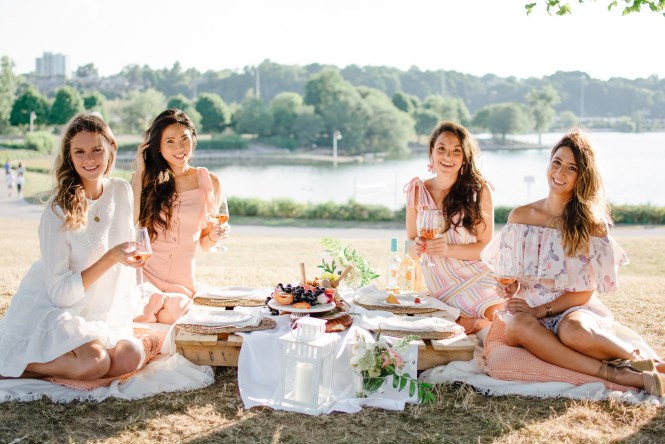At the heart of the matter, we all desire the same thing, to be seen, heard and accepted for who we are. We desire to be a part of an authentic community where we feel safe to be ourselves. A place to give and to receive. A place to learn and grow.
In this blogpost, I will share some tips for building community, both online and offline.
Let’s start with some benefits of being a part of a thriving community:
- To get support and advice
- To enjoy friendship and companionship
- A place to be of service
- A place to belong
- To have fun and create shared memories

As humans we are social beings and being a part of an authentic, active, growing community meets many of our 6 human needs as taught by Tony Robbins.
These include the need for:
- Certainty: assurance you can avoid pain or gain pleasure
- Uncertainty/Variety: the need for the unknown, change, new stimuli
- Significance: feeling unique, important, special or needed
- Connection/Love: A strong feeling of closeness or union with someone or something
- Growth: an expansion of capacity, capability and understanding
- Contribution: A sense of service and focus on helping others, giving to and supporting others.

A solid community is one of the pillars of health and research has shown how social isolation and loneliness can lead to higher risks of a variety of physical and mental conditions which may include: anxiety, depression, weakened immune system, high blood pressure, heart disease etc
Many people have suffered greatly over the past two years where they have been forced into unnatural ways of living through extended lockdowns, disconnection and restricted personal contact. People are craving connection, especially in-person, face-to-face, heart-to-heart connection.

Many people have forgotten what it is like to be in community and therefore need some tips for building community again.
Due to the massive movement of people over the pandemic many people are leaving their existing support structures (immediate family, close friends, colleagues) and have been forced to start from scratch.
Making friends as we get older can become increasingly difficult and takes more intentional effort and energy, but with these tips for building community, I hope to make this process that little bit easier and exciting for you.

Before we look at the “tips for building community”, let’s look at what hinders healthy community, so we know what to look out for.
- Firstly, a healthy community has a culture that is warm, friendly and accepting. Judgemental attitudes or the inability to hold space for someone with a different view or opinion than our own, can foster disconnection and lead to unhealthy ways of relating with different members in the group.
- If there is not mutual engagement. An unhealthy culture develops when only a few people in the group do all the work of bringing others together and encouraging connection. Each member of the group needs to take personal responsibility and ownership for making the group great!
- Personal insecurity of group members. A group that is healthy and growing is when each member knows who they are and can show up authentically and securely. There is a mutual acceptance of each other’s differences, cultures and quirks.

Here are 7 tips for building a community that people long to belong to. This can be done online or offline, but the principles remain.
- The group needs to be inclusive and accepting of each other’s differences and can embrace diversity (age, culture, beliefs). This can be achieved by having a healthy measure of mutual respect. It is important to listen to each other, without judgement, so that people feel safe to be themselves. This doesn’t mean you need to agree with everyone, but to have the maturity to share your opinion on a topic in a respectful way. This is the opposite of the cancel culture. We want to create a caring culture instead.
- The group needs to be fun. Include humour, interesting questions that stimulate further discussion or fun activities or outings to engage in.
- Gather around a common interest:
- Hobby
- Purpose (for example work from home communities)
- Shared interests and values. For example, after moving to a new State, I started a Nature and picnic group based on the values of being in nature and sharing a meal together to make new friends who enjoyed similar activities. It is amazing how many people share these values where I live!!!
- Healthy communities can be open, honest and vulnerable with each other. Brene Brown talks a lot about the power of vulnerability. This is where deeper connections and trust is formed.
- As an individual seeking an authentic community to belong to, you need to understand that it will take courage, time and getting out of your comfort zone. You may even get hurt or disappointed along the way. However, the negative impact of remaining lonely, isolated and disconnected is far worse. Be brave and put yourself out there but remember to be yourself.
- If you are pioneering a new group, help people to feel special and heard by practicing the art of listening twice as much as you speak. People love to talk about themselves, and you will help to create that culture of acceptance.
- Ensure that the group has gratitude, generosity and hope as its core values. With all the negativity the world has had to endure over the past two years, the last thing people need or want is negativity. Encourage group members to focus on gratitude, to be generous with their time and resources and to spread hope to others looking for a place of belonging.


